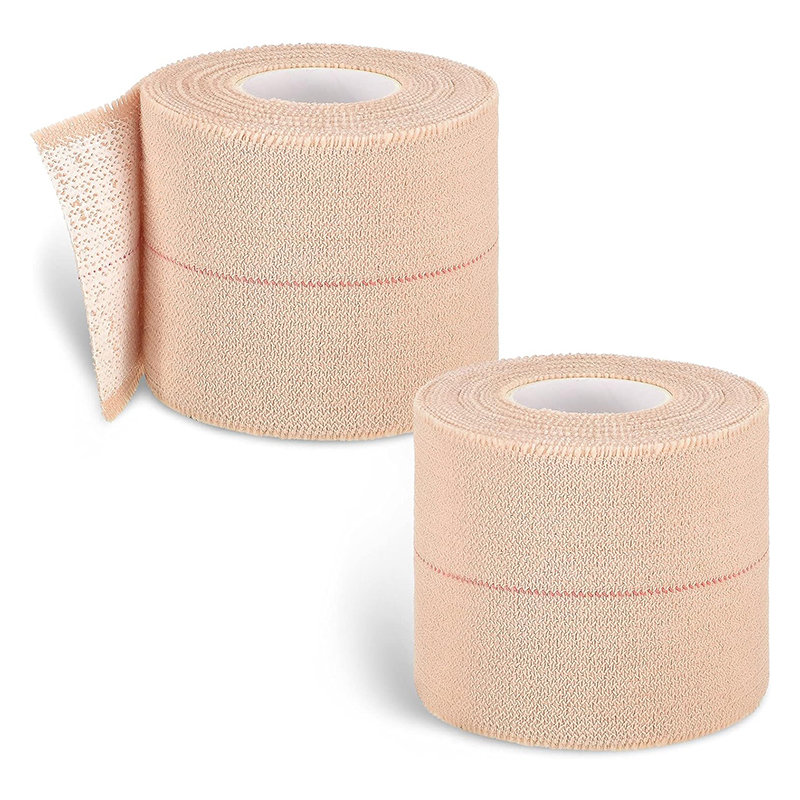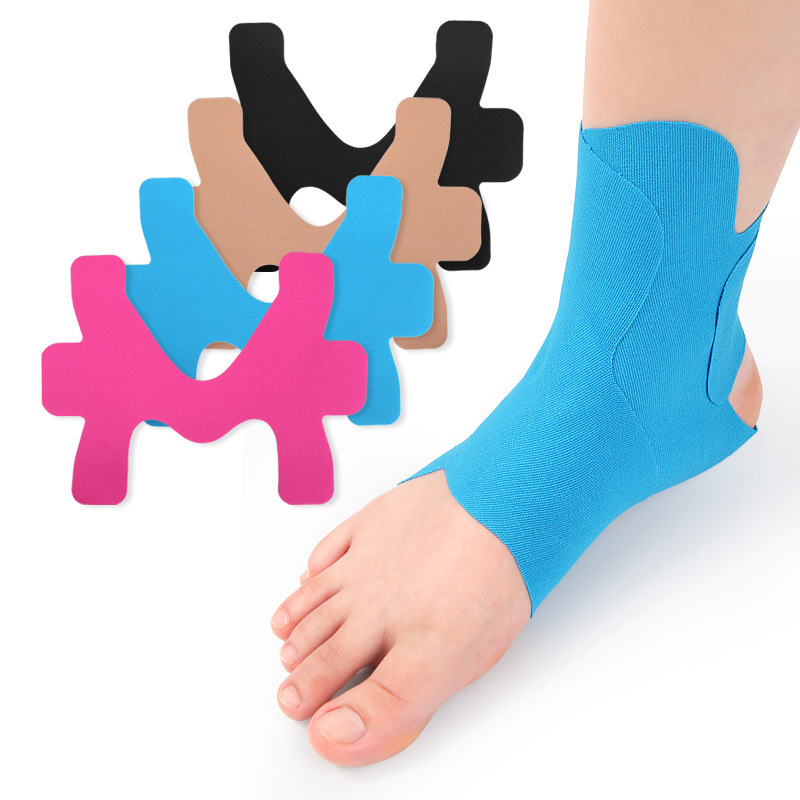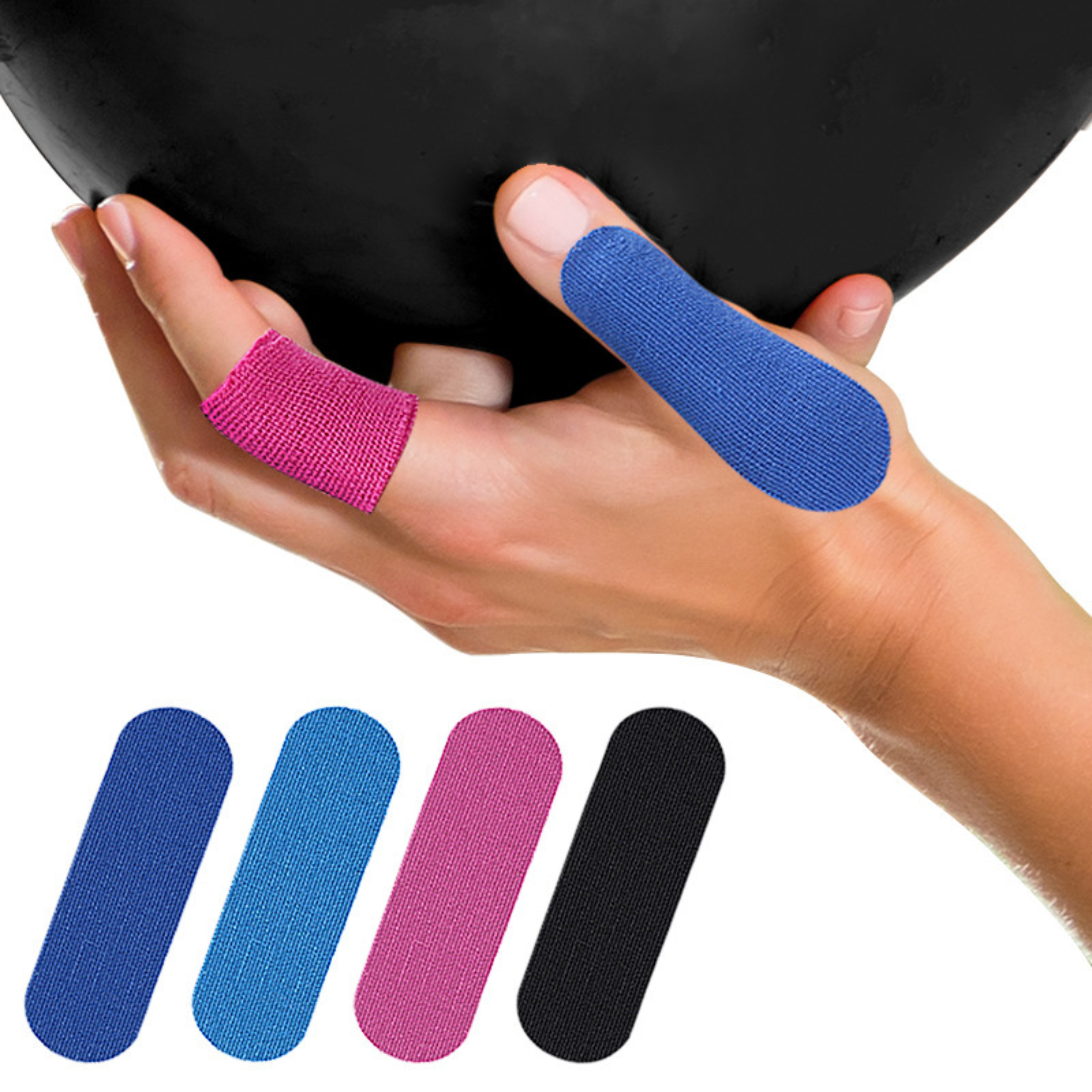News

Elastic Adhesive Bandages: A Reliable Solution for Sports Injuries and Everyday Support
In the realm of physical activity, from the professional athlete to the weekend gardener, the potential for minor injuries and muscular strain is a constant companion. We’ve all been there: a twisted ankle on a hike, a sore wrist after a long day at the computer, or a stiff knee that complains on the stairs. While rest and ice are often the first lines of defense, there’s a humble, powerful tool that deserves a permanent spot in every first-aid kit and gym bag: the elastic adhesive bandage.
Often recognized by brand names like KT Tape, PowerFlex, or simply as “sports tape,” these versatile bandages are far more than just sticky fabric. They represent a practical, accessible form of support that bridges the gap between a simple bandage and a rigid brace.
What Exactly Are Elastic Adhesive Bandages?
At its core, an elastic adhesive bandage is a flexible strip of material—typically a blend of cotton and synthetic fibers like nylon or polyester—coated with a medical-grade adhesive. The “elastic” component is key; unlike traditional gauze or cloth tape, it can stretch significantly, often up to 130-180% of its original length, and then recoil back towards its resting state.
This combination of stretch and stick creates a unique dynamic support system. Think of it as a second, intelligent layer of skin that works with your body’s movements rather than restricting them. The adhesive is designed to be strong enough to stay in place through sweat and light moisture but is also gentle enough for most skin types to tolerate for several days.
They come in a variety of widths (from 1-inch for fingers to 4-inch or wider for knees and backs) and pre-cut strips or rolls, allowing for customized application based on the body part and the intended support.
The Science of Support: How Do They Actually Work?
The magic of elastic adhesive bandages lies in their biomechanical and neurological effects. They don’t act as a cast, immobilizing a joint completely. Instead, they provide what is known as proprioceptive support.
1. Enhancing Proprioception
Proprioception is your body’s innate ability to sense its position, movement, and action in space. It’s the feedback loop between your muscles, joints, and brain that tells you where your ankle is without having to look at it. When you have an injury, this feedback system can become impaired.
The gentle, constant pressure and pull of an elastic adhesive bandage on the skin stimulate the sensory receptors (mechanoreceptors) located just beneath the surface. This heightened sensory input acts as a reminder to your brain about the position and movement of the injured area. This can lead to:
Improved Movement Patterns: You become more aware of the joint, potentially avoiding painful or unstable positions.
Increased Confidence: The physical sensation of support can provide psychological reassurance, allowing for more controlled movement and reducing the fear of re-injury.
Subconscious Stabilization: The brain may respond to this enhanced feedback by slightly increasing muscle activation around the joint, creating a more natural, dynamic stability.
2. Providing Mechanical Support
While not their primary function, these bandages do offer a degree of mechanical assistance.
Lifting the Skin: By gently lifting the skin away from the underlying tissue, the tape can create microscopic space. This may help reduce pressure on pain receptors (nociceptors) and improve lymphatic drainage, potentially reducing swelling and bruising.
Targeted Compression: The elastic nature of the tape provides mild, consistent compression, which can help manage inflammation and offer a feeling of tightness and security around strained muscles or tender joints.
Assisting Movement: For muscles that are fatigued or weakened, the recoil of the tape can offer a slight assist during contraction or help slow down a movement during elongation, taking a small amount of load off the recovering tissue.
Application in the World of Sports Injuries
For athletes, from beginners to elites, elastic adhesive bandages are an invaluable tool for both injury management and prevention.
Common Sports-Related Uses:
Ankle Sprains: This is one of the most frequent applications. Taping an ankle can provide crucial proprioceptive feedback to help prevent the ankle from “rolling” again during the healing phase. It offers support during dynamic movements like cutting, jumping, and running without the bulk of a brace.
Knee Support: For issues like patellofemoral pain syndrome (runner’s knee), mild MCL or LCL sprains, or general knee instability, specific taping techniques can help guide the kneecap’s tracking or offload stress on certain ligaments.
Shoulder Stabilization: Athletes in sports like swimming, tennis, and baseball often use tape to provide a reminder to maintain good shoulder mechanics, support the rotator cuff, and prevent excessive, potentially harmful range of motion.
Elbow and Wrist Strains: Tennis elbow (lateral epicondylitis) and golfer’s elbow (medial epicondylitis) respond well to taping techniques that help unload the stressed tendons. Wrist tape can provide support for sprains or conditions like carpal tunnel without hindering grip strength significantly.
Muscle Strains: Taping a pulled hamstring, calf, or quadricep can reduce the feeling of tightness and pain by supporting the muscle belly, allowing for a more comfortable range of motion during rehabilitation.
The goal in sports is rarely to completely immobilize. It’s to create a safe environment for the injury to heal while still allowing the athlete to train or compete at a modified intensity.

Everyday Support: Beyond the Playing Field
The benefits of elastic adhesive bandages extend far beyond the track, court, or gym. They are a fantastic solution for the myriad of minor aches, pains, and repetitive stresses we encounter in daily life.
Common Everyday Uses:
Lower Back Pain: For those who spend long hours at a desk or who experience non-specific lower back pain, taping the lower back can improve posture awareness. The gentle pull on the skin can remind you to sit up straight or engage your core, reducing strain on the lumbar spine.
Arthritic Joints: Individuals with osteoarthritis in joints like the knees or thumbs can find significant relief. The tape can help reduce feelings of stiffness and pain by offloading pressure within the joint, making daily activities like walking or gripping objects more manageable.
Posture Correction: Strategic application across the upper back and shoulders can gently pull the shoulders back, counteracting the forward slouch associated with desk work and phone usage.
Bruising and Swelling: After a minor bump or twist, taping can facilitate lymphatic drainage, helping the body to more efficiently clear the fluid and debris that cause swelling and discoloration.
Plantar Fasciitis: Taping the arch of the foot can provide excellent support, reducing strain on the plantar fascia ligament first thing in the morning or during long periods of standing.
In these contexts, the tape acts as a silent, wearable coach, offering gentle reminders and support throughout your day without interrupting your routine.
A Practical Guide to Application and Safety
To reap the benefits and avoid any potential pitfalls, proper application is essential.
Step-by-Step Application:
Prepare the Skin: The area must be clean, dry, and free of oils, lotions, or sweat. Shaving excessive hair is recommended for better adhesion and more comfortable removal. Use an alcohol wipe to ensure a perfectly clean surface.
Round the Corners: Before applying any strip, use scissors to round off all four corners. This prevents the corners from catching on clothing and peeling up prematurely.
Measure and Tear: Tear off the required strips from the roll. Do not use scissors, as this can compromise the backing paper. For most techniques, you will apply the “anchors” (the first and last inch or two of the tape) with no stretch.
Apply with the Right Tension: This is the most crucial step. For most support applications, you will only apply a 25-50% stretch to the middle section of the tape. The anchors should be laid down with zero stretch. A common mistake is stretching the tape too much, which can lead to skin irritation and restrict circulation.
Activate the Adhesive: Once the tape is applied, rub it vigorously for 10-15 seconds. The heat generated from friction activates the adhesive, ensuring a strong bond.
Important Safety and Removal Tips:
Do Not Use On: Open wounds, infected skin, areas with fragile or compromised skin (e.g., from radiation therapy), or if you have a known allergy to acrylic adhesives.
Perform a Patch Test: If you have sensitive skin, apply a small piece of tape to your inner arm and wait 24 hours to check for a reaction.
Never Wrap Too Tightly: The tape should feel supportive but never numb, tingly, or cause any change in skin color downstream. It should not restrict blood flow.
Proper Removal is Key: To remove, soak the tape thoroughly with baby oil, olive oil, or a specialized adhesive remover. Let it soak in for several minutes to break down the glue. Then, slowly peel the tape back on itself, pressing down on the skin as you go to minimize discomfort. Never rip it off quickly like a bandage.
Conclusion: A Simple Tool for Complex Bodies
Elastic adhesive bandages are a testament to the idea that effective solutions don’t have to be complex or expensive. They are a versatile, drug-free, and non-invasive option for managing a wide spectrum of musculoskeletal issues. By leveraging the body’s own sensory systems, they provide a unique form of support that empowers movement rather than preventing it.
Whether you’re a runner nursing a sore Achilles, a parent lifting a toddler with an achy back, or someone simply looking for a little extra support during daily activities, these bandages offer a reliable and practical solution. Keep a roll in your medicine cabinet, learn a few basic techniques, and you’ll have a powerful ally in your pursuit of staying active, supported, and pain-free. As always, for serious or persistent injuries, consult a healthcare professional or physical therapist who can diagnose the issue and guide you on the most effective taping methods for your specific needs.

- ASHER.CAO:+86-176 2548 7782 Asher.cao@healthline-medical.com
- HARONJU:+86-198 5296 4937 haronju@healthline-medical.com
- DI.TIAN:+86-183 0527 6521 Di.tian@healthline-medical.com
- Tel:+86-512-6289 3223
- Mob:+86-176 2548 7782 / +86-198 5296 4937 / +86-183 0527 6521
-
Email:zhujun@healthline-medical.com
sales@healthline-medical.com
- Whatsapp / Wechat:+86-176 2548 7782 ; +86-198 5296 4937; +86-183 0527 6521
- Skype:+86-176 2548 7782 / +86-183 0527 6521
Copyright © 2025 SUZHOU HEALTHLINE MEDICAL PRODUCTS CO., LTD
All Rights Reserved.

The information provided on this website is intended for use only in countries and jurisdictions outside of the People's Republic of China.


 English
English Español
Español русский
русский عربى
عربى











